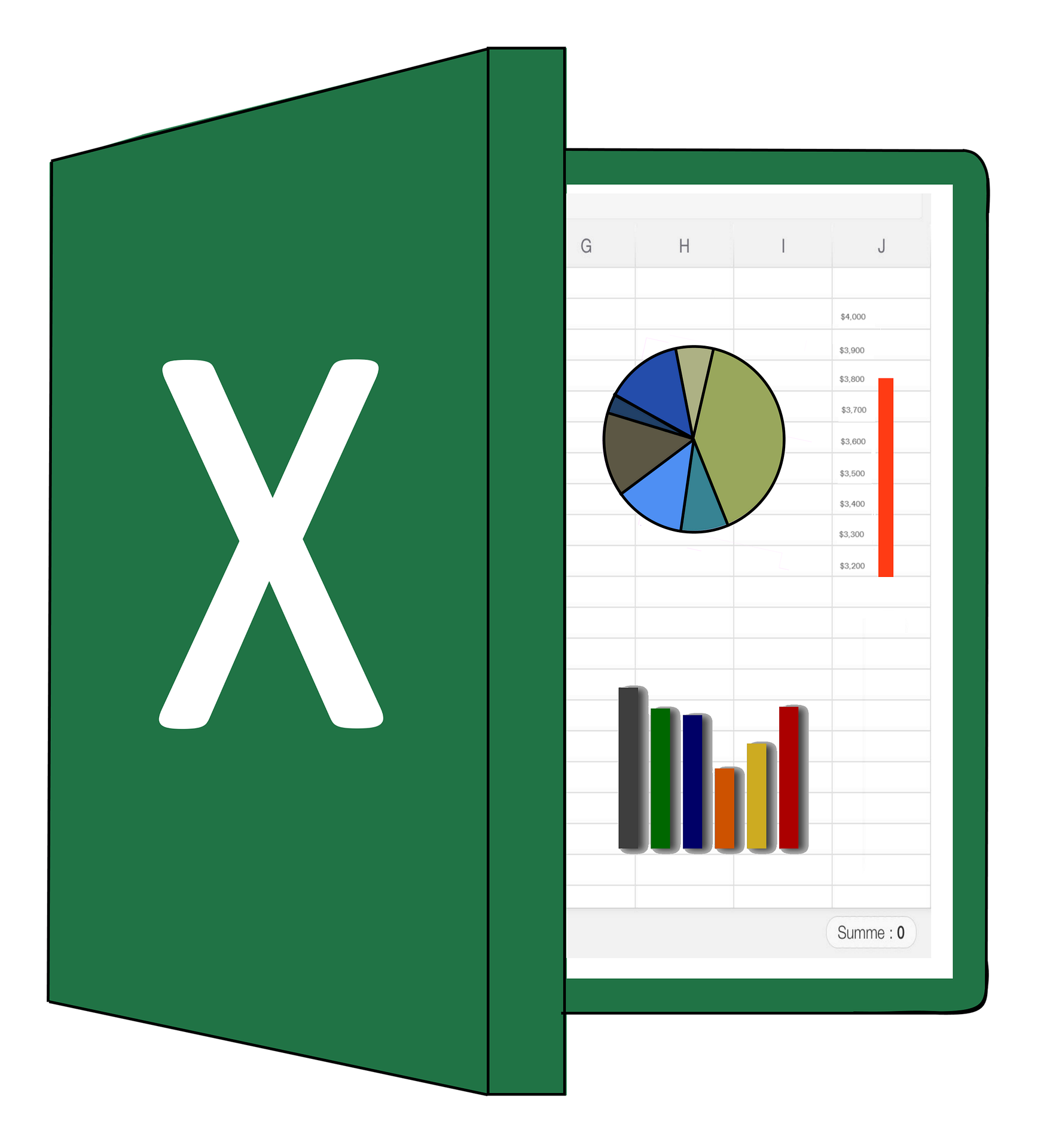Excel Financial Calculation & Its Meaning III
Introduction
In our previous series of Financial Calculation through MS-Excel tools , we covered
· PMT, IPMT, PPMT
· CUMIPMT
· CUMPRINC
· DB
· DDB
In this Post Excel Financial Calculation & Its Meaning III We will cover some financial terms like
· DISC
· DOLLARDE
· DOLLARFR
· DURATION
· EFFECT
· FV
· FVSCHEDULE
 |
| MS Excel Financial Terms |
16)
DISC: It is a short form of Discount. This function returns the discount rate for a security (shares or bond), Mutual Fund, Insurance
Syntax:
=DISC(settlement, maturity, pr, redemption,[basis])
· Settlement – Settlement date of the security (Shares or bond).
· Maturity – Maturity date of the security.
· pr – Security price per Rs. 100 face value. (Investment)
· Redemption – Security redemption value per Rs 100 face value. ( The amount which is discounted when you withdraw money before the maturity period of your Security (Shares or Bond)
· basis – [optional] Day count basis (we have to put 3 as we live in India, for US put 0, for Europe put 4)
· Date: It should be fill in the format as your computer date settings are done.
Eg 1
|
Settlement |
09/15/2019 (Sept 15) |
|
Maturity |
09/15/2020 (Sept 15) |
|
Price (pr) |
90 |
|
Redemption |
100 |
|
Basis |
3 (as we live in India) |
|
|
|
|
=DISC(settlement, maturity, pr, redemption,[basis])
|
0.099726 |
Eg 2
|
Settlement |
01/15/2017 (Jan 15) |
|
Maturity |
12/15/2017 (Dec 15) |
|
Price (pr) |
100000 |
|
Redemption |
100 |
|
Basis |
3 (as we live in India) |
|
|
|
|
=DISC(settlement, maturity, pr, redemption,[basis])
|
-1091.721557 |
Note:
Minus sign shows that you will get Rs.1091.721 less than from the amount when you complete the maturity date.
Note:
· If dates are invalid (i.e. not actually dates) DISC returns #VALUE!
· DISC returns #NUM when:
o settlement >= maturity
o pr <= 0 or redemption <= 0
o Basis is out-of-range
17)
DOLLARDE: This function helps in converting a dollar value in fractional notation into a dollar value expressed in decimal notation. DOLLARDE will divide the fraction part of the value by an integer specified by the user.
Syntax :
=DOLLARDE(fractional_dollar, fraction)
· Fractional_dollar:–The number expressed as an integer part and a fraction part, separated by a decimal point.
Basically, the number after the decimal
· Fraction: — Here the integer is used as a denominator. In case of decimal, Excel will truncate into integer.
Basically 6 will considered as 1/6 ; 16 is considered as 1/16 etc.
|
S.No |
Fractional Dollar |
Fraction |
DOLLARDE VALUE |
|
1 |
1.02 |
16 |
=DOLLARDE(Fractional_dollar,fraction)– =DOLLARDE(1.02,16)=1.125 |
|
2 |
50.3 |
4 |
=DOLLARDE(Fractional_dollar,fraction)– =DOLLARDE(50.3,4)= 50.75 |
|
3 |
10.1 |
2 |
=DOLLARDE(Fractional_dollar,fraction)– =DOLLARDE(10.1,2)= 10.50 |
Observation
Eg:
=DOLLARDE(1.02,16)=1.125
You have to take digit after the decimal of the fractional dollar (1.02 = 02) and the fraction is treated as denominator like 16 is 1/16
Now, divide it 02/16= 0.125
Now, add the digit before the decimal (fractional dollar like 1) with 0.125
Add = 1+0.125= 1.125 is equal to
=DOLLARDE(1.02,16)=1.125
Eg2
=DOLLARDE(50.3,4)=50.75
Again, You have to take digit after the decimal of the fractional dollar (50.3 = 3) and the fraction is treated as denominator like 4 is ¼
Now, Divide it ¾= 0.75
Now, add the digit before the decimal (fractional dollar like 50) with 0.75
Add = 50+0.75= 50.75 is equal to
=DOLLARDE(50.3,4)=50.75
18)
DOLLARFR: This function helps convert the dollar value which was in decimal into a fractional dollar value. It helps in products like securities prices.
Syntax:
=DOLLARFR(decimal_dollar,fraction)
· Decimal_dollar= Dollar value expressed as decimal. It is basically considered after the decimal value of the decimal_dollar (Eg: 1.67 = .67 is the decimal dollar)
· Fraction:– Denominator value of the fractional unit.
Here We generally multiply decimal dollar and fraction
|
S.No |
Decimal Dollar |
Fraction |
DOLLARFR VALUE |
|
1 |
1.02 |
16 |
=DOLLARFR(Decimal_dollar,fraction)– =DOLLARFR(1.02,16)=1.0032 |
|
2 |
50.3 |
4 |
=DOLLARFR(Decimal_dollar,fraction)– =DOLLARFR(50.3,4)= 50.12 |
|
3 |
10.1 |
2 |
=DOLLARFR(Decimal_dollar,fraction)– =DOLLARFR(10.1,2)= 10.02 |
Observation
Eg: 1
Decimal dollar = 1.02 & Fraction=16
Here we take the right side of the decimal , i.e. =.02
Fraction =16 , here we take 0.16
Now we multiply = .02*.16=.0032
Now add left side of the decimal dollar+.0032 = 1+.0032=1.0032
=DOLLARFR(1.02,16)=1.0032
Eg:2
Decimal dollar = 50.3 & Fraction=4
Here we take the right side of the decimal , i.e. =.3
Fraction =4 , here we take 0.4
Now we multiply = .3*.4=.12
Now add left side of the decimal dollar+.12 = 50+.12=50.12
=DOLLARFR(50.3,4)=50.12
19)
DURATION: It returns (or gives) the annual duration of security with periodic interest payment. It is used by Portfolio Managers. It is also used in Financial modeling.
Syntax:
=DURATION(settlement, maturity, coupon, yield, frequency, [basis])
· Settlement:- (Required value):- The security’s (Shares or Bond) settlement date. The security settlement date is the date after the issue date when the security is traded to the buyer. It means the date when the security is possessed to the buyer.
For eg: The settlement date is the date a buyer purchases a coupon, such as a bond. The maturity date is the date when a coupon is matured. For example, suppose a 30-year bond is issued on January 1, 2018, and is purchased by a buyer six months later. The issue date would be January 1, 2018, the settlement date would be July 1, 2018, and the maturity date would be January 1, 2048, which is 30 years after the January 1, 2018, issue date.
· Maturity:- (Required value):-The security’s maturity date. It is the date when the security (share or bond) is matured.
· Coupon:– (Required value ):-The security’s annual coupon rate.
· Yld: (Required value):-Also called Yield. The security’s annual yield.
· Frequency:–(Required value). The number of coupon payments per year. For annual payments, frequency = 1; for semiannual, frequency = 2; for quarterly, frequency = 4
· Basis :- (Optional value). The type of day count basis to use.
|
Basis |
Day count Basis |
|
0 |
30/360 (US/NASD) |
|
1 |
Actual/Actual |
|
2 |
Actual/360 |
|
3 |
Actual/365 (India ) |
|
4 |
30/360 (European countries) |
|
Settlement Date |
Maturity Date |
Coupon |
Yld |
Frequency |
Basis |
DURATION |
|
15-Jan-2017 |
15-Dec-2017 |
4.75% |
3% |
1 |
3 |
=DURATION(settlement,maturity,coupon,yld,frequency,[basis])– =DURATION(15-Jan-2017,15-Dec-2017,4.75%,3%,1,3)=0.915068493 |
|
15-Jan-2017 |
15-Dec-2017 |
4.75% |
3% |
2 |
3 |
=DURATION(settlement,maturity,coupon,yld,frequency,[basis])– =DURATION(15-Jan-2017,15-Dec-2017,4.75%,3%,2,3)=0.903565842 |
|
15-Jan-2017 |
15-Dec-2017 |
4.75% |
3% |
4 |
3 |
=DURATION(settlement,maturity,coupon,yld,frequency,[basis])– =DURATION(15-Jan-2017,15-Dec-2017,4.75%,3%,4,3)=0.897773246 |
|
|
|
|
|
|
|
|
20)
EFFECT:- This function will calculate the annual interest rate with the number of compounding periods per year. It (EFFECT function) is generally used to compare financial loans with different compounding terms.
Syntax:
=EFFECT(nominal_rate,npery)
· Nominal_rate:–It is the nominal or stated interest rate.
· Npery :– Number of installment in one year (the number of compounding periods in one year.
Eg:
How to Calculate EFFECT Manually
EFFECT = ( 1+ Nominal_rate) ^ Npery
————————————— — (minus) 1
Npery
|
Nominal Rate or Interest Rate |
Npery |
EFFECT (Effective Value) |
Manual Effective Value |
|
4% |
12 |
=EFFECT(nominal_value,npery) =EFFECT(4%,12)= 0.040741543 |
EFFECT=(1+NOMINAL_RATE/NPERY)npery -1 =POWER(1+4%/12,12) -1 = 0.40741543 |
|
6% |
12 |
=EFFECT(6%,12)= 0.061677812 |
0.061677812 |
|
9% |
12 |
=EFFECT(9%,12)= 0.093806898 |
0.093806898 |
|
7% |
12 |
=EFFECT(7%,12)= 0.072290081 |
0.072290081 |
|
5% |
12 |
=EFFECT(5%,12)= 0.051161898 |
0.051161898 |
|
|






